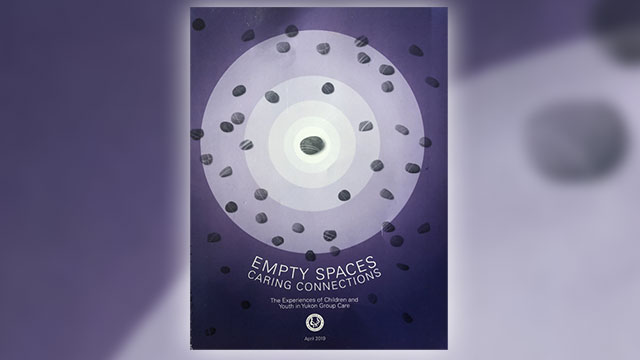A systemic review of the child welfare system was recently conducted by the Yukon Child and Youth Advocate Office (YCAO).
It uncovered a staggering statistic – that 79 per cent of the youth in care were Indigenous.
As a result, the YCAO called on the territorial government to make changes.
“The issues really focused on primarily relationships, safety and trust, and having somebody to connect with,” said Annette King, a child and youth advocate in Whitehorse who conducted the review and penned recommendations.
A systemic review of the child welfare system in the Yukon was called ‘Empty Spaces-Caring Connections’. (APTN)
King’s report was entitled ‘Empty Spaces-Caring Connections’.
It made 30 recommendations.
“A lot of times (youth) felt severed from their family or community,” King said.
The report “also focused on how they leave care, the aging-out issue, and then one of the big things was their participation in the decisions that were being made about them.”
King looked at who was in care and why between April 2015 and April 2018.
During that time there were 94 youth in the system, the majority of which came from Indigenous families.

They told King they needed more culturally based supports.
Nigel Allen of Yukon’s Health and Social Services said his department accepted 27 of the 30 recommendations.
“While we agree with the intent of those recommendations it’s just that the department is taking a different approach to those,” he said.
Both sides agree the implementation of most of the recommendations is a good step forward.
“The intention behind those recommendations was to improve the cultural experiences of children and youth that are in care and to not sever the ties,” said King.
“Just because you’re being cared for by someone else, culture is still really big, important part of your whole wellness plan and case plan – and you need to include those.”
As the number of youth seeking help continues to grow, it will be important for YCAO and Health and Social Services to continue to work together.
“When you engage with a young person the outcome for the young person is better,” added King. “They’re more likely to participate in whatever plan is for them because they understand it,
and sometimes they even come up with things way beyond what you thought.
“So if we engage young people in their planning, you’ll have young people engaged in their plan.”











